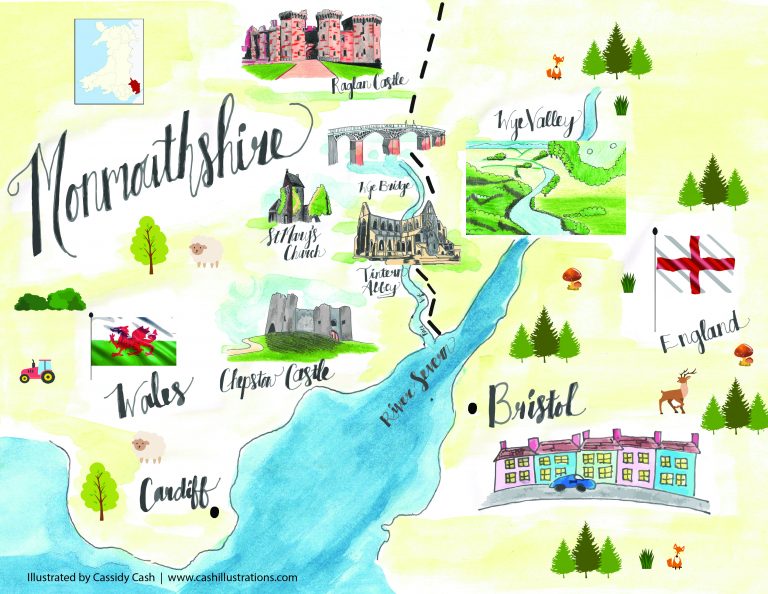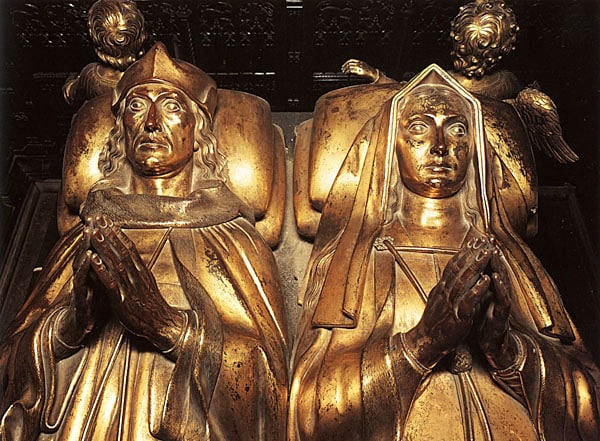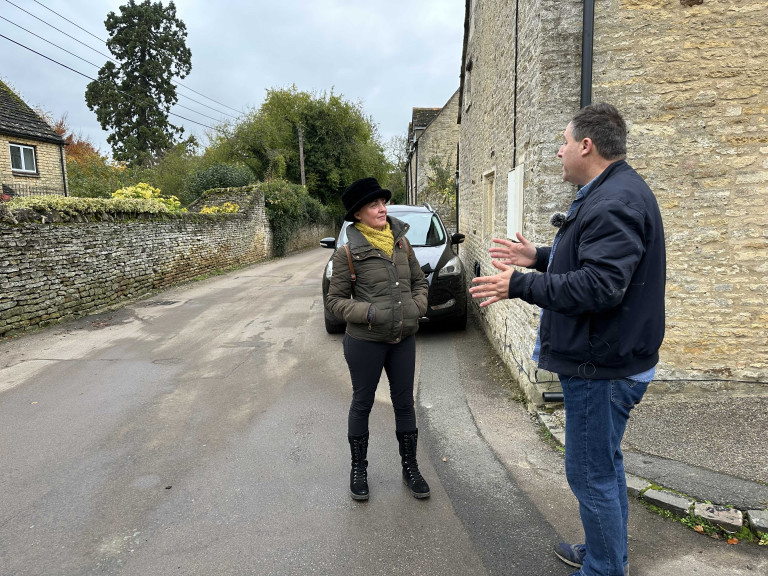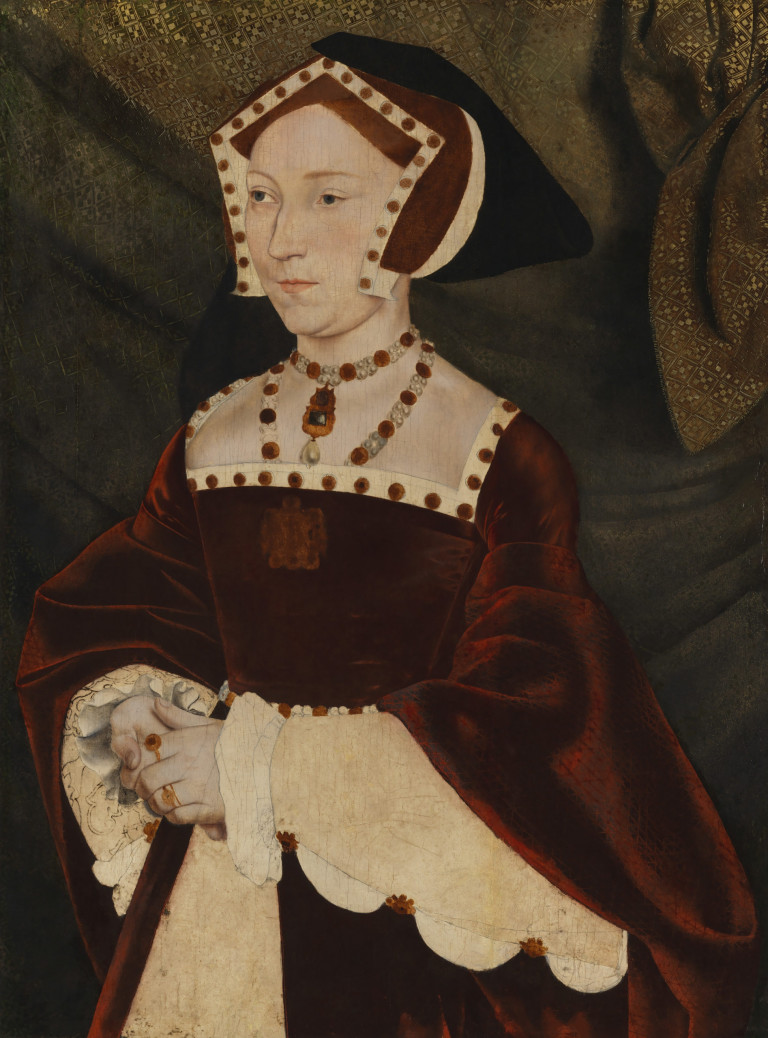A Meander Through Tudor Dorset
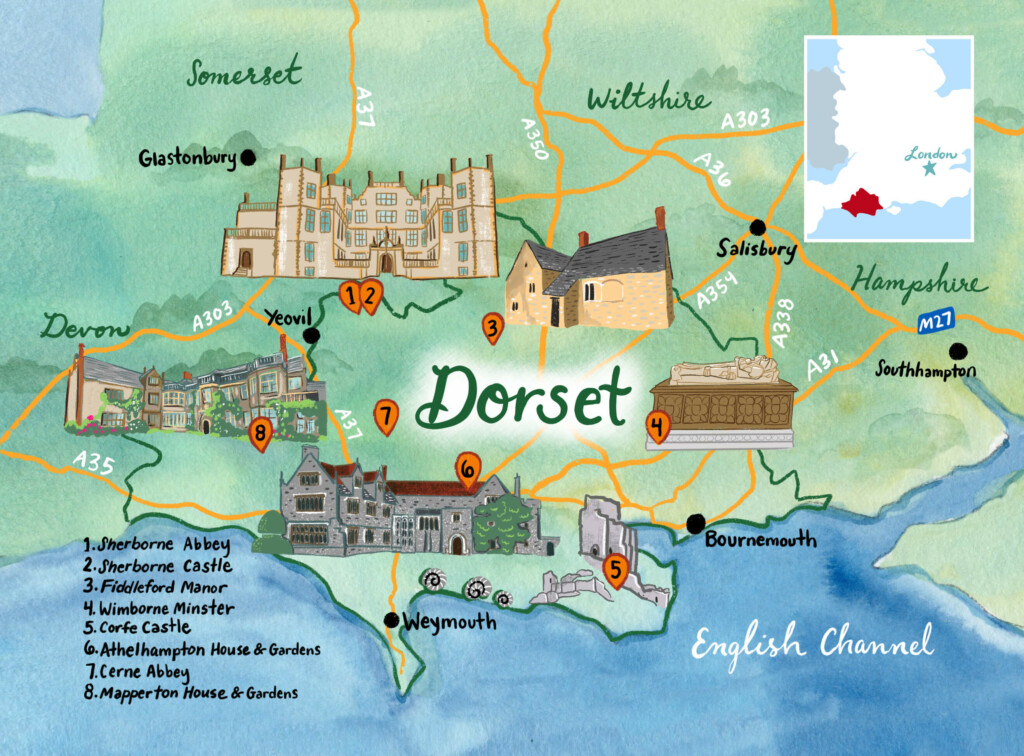
In this blog, I share a four-day itinerary for a leisurely trip through Dorset and its picturesque towns and historic attractions, taking in churches, castles and manor houses with captivating Tudor history and connections.
Dorset is one of the counties most often overlooked by Tudor enthusiasts. This may be because no main artery ploughs through it, leaving the challenge of a long, meandering journey from London or the north to reach its many Tudor treasures. However, as I recently discovered, with challenge comes reward.
Apart from the fact that its Jurassic Coast (so-called because of the many dinosaur fossils found there) is a UNESCO World Heritage site, there are pretty historic towns, charming manor houses, notable tombs, and haunting ruins to explore.
During the medieval period, one of the most influential families to dominate as landowners in this part of the world was the Earls and Dukes of Somerset. This is significant to Tudor history lovers as the 1st Duke and Duchess of Somerset were Margaret Beaufort’s parents and, therefore, grandparents of the dynasty’s founder, Henry VII. In this article, we shall visit their splendid tomb.
However, they are not the only Tudor notables who graced this county’s history. Others include Margaret of Anjou, Sir Thomas Wyatt, Sir Walter Raleigh, and Sir Christopher Hatton, all of whom we will encounter on our travels and who add colour to Dorset’s Tudor past.
As ‘grockles’ (the local and sometimes slightly controversial term for a tourist), we will meander across the Dorset countryside from one of the county’s prettiest towns, Sherborne, heading southeast to Corfe before looping back to reach Mapperton House in the west of the county. Along the way, you might hear the splendid rolling west country accent, which is distinctive of Dorset and other counties of the southwest of England and maybe even snaffle a taste of a ‘Dorset Knob’…
Let’s go!
Itinerary
- Day One: Sherborne
- Day Two: Fiddleford Manor and Wimborne Minster
- Day Three: Corfe Castle and Athelhampton House
- Day Four: Cerne Abbey and Mapperton House
Tudor Dorset: Day One:
We start our journey at one of Dorset’s most charming towns: Sherborne. Not only is the pretty high street bejewelled with delightful historic buildings and independent shops, but three notable heritage properties are ready to be explored.
Sherborne Abbey
Address: The Abbey Close, Sherborne, Dorset DT9 3LQ
The first of these is the Abbey, located a stone’s throw from the high street. After it was dissolved on 18 March 1539, the Abbey Church of St Mary was purchased by the townspeople to use as their parish church, while some of its associated claustral buildings eventually became enfolded into the fabric of the adjacent school.

However, aside from being a beautiful building, any Tudor time traveller will be most interested in the fact that Sherborne is the accidental final resting place of Sir Thomas Wyatt. Thomas was, of course, reputedly in love with Anne Boleyn before her marriage to Henry VIII. His closeness to Anne and the Boleyn family saw him arrested and imprisoned in the Tower of London when the coup against the Queen blew up in May 1536. However, he was released a month later.
The end came in the autumn of 1542. Thomas was dispatched on a diplomatic mission. He was to collect a Spanish envoy from Falmouth on the south coast of Dorset (presumably from where he had just landed) and escort him to London. On the way there, Wyatt died, afflicted by a fever of an unknown cause at the home of his good friend, Sir John Horsey, whose country seat was at the nearby Clifton Maybank. Subsequently, Wyatt was buried in the Horsey vault in Sherborne Abbey, aged thirty-nine. His simple memorial plaque is very easy to miss but can be found in the north transept and reads:
‘In Memory of Sir Thomas Wyat, poet and statesman, who died at Clifton Maybank, the house of his friend, Sir John Horsey, 11th Oct. 1542 and was buried in the vault in this chapel. “Wyat resteth here, that quick could never rest.”’
Sherborne Old Castle and Sherborne Castle
Sir Walter Raleigh is the Tudor character most closely associated with Sherborne. Born around 1552, Raleigh’s exploits are the stuff of legend. He rose to prominence in the court of Queen Elizabeth I, capturing her attention with his charm and intellect.
I have read that he fell in love with the medieval castle in Sherborne as he passed it on his travels from his native Devon to the court in London, eventually acquiring the estate from the Crown in 1592. After failing to modernise it, Raleigh abandoned the castle in favour of a ruined Tudor hunting lodge in the adjacent Deer Park, which he set about converting to an Elizabethan mansion. When Raleigh took up residence there, it was called ‘Fortune’s Fold’.
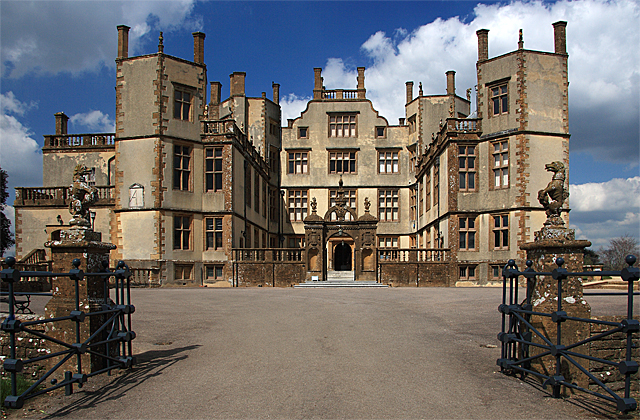
The old castle was finally destroyed in 1645, during the English Civil War, while Fortune’s Fold became known as the new ‘Sherborne Castle’. This glorious house still stands today and remains very much a family home and working estate. While the gardens open in early Spring (March), the house opens later, in May, until the end of September. Opening times vary depending on which month you visit. Check Sherborne Castle’s website for all the latest information.
Sherborne Old Castle
Address: Castleton Road, Sherborne, Dorset DT9 3SA
Sherborne Castle
Address: New Road, Sherborne, Dorset DT9 5NR
Tudor Dorset: Day Two
Fiddleford Manor
Address: Fiddleford, Sturminster, Newton, Dorset DT10 2BX
Fiddleford Manor is a wonderful medieval hall house built around 1370. English Heritage currently owns it, but it is unmanned. Although there have been major alterations and additions to the house’s fabric over the intervening centuries, a significant portion remains in its raw and authentic state. This makes Fiddleford Manor a wonderful little place to visit; be prepared to enjoy its charms alone, particularly if you visit out of season, as I did.
The nearby car park is free. I was grateful to be wearing my walking boots as I picked my way gingerly down a very muddy path to the house, which stands adjacent to a tributary of the River Stour. The simplicity of the manor is in stark contrast to the opulence of Sherborne Castle, but this allows us to appreciate the layout and use of the spaces in this type of building all the more.
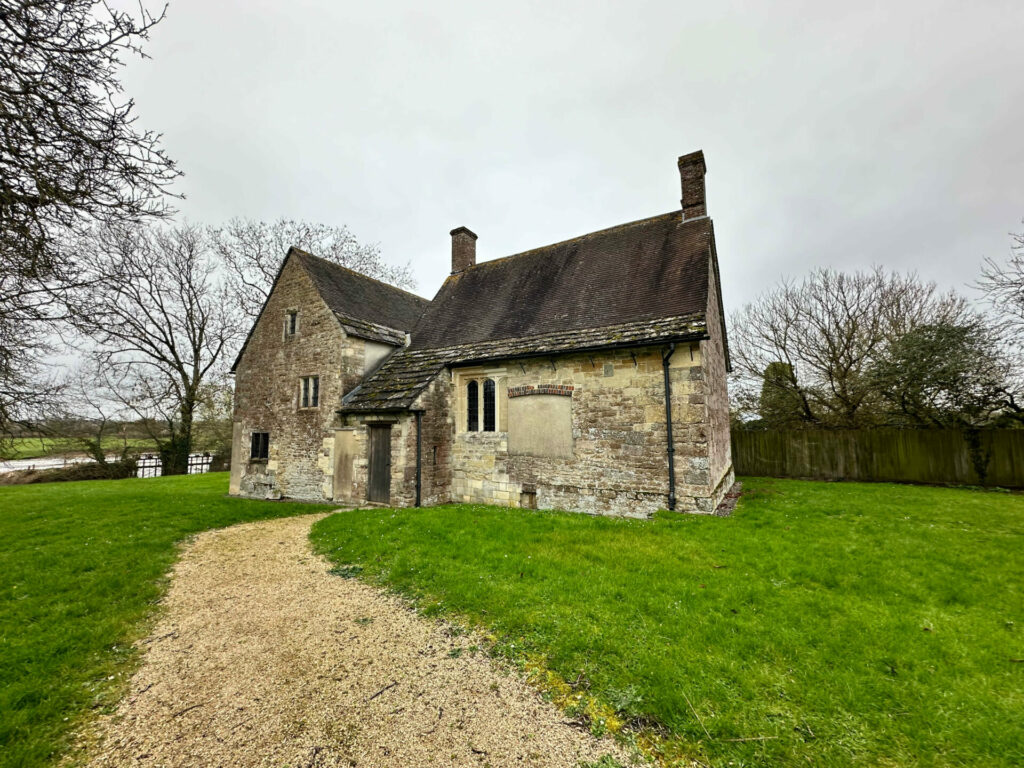
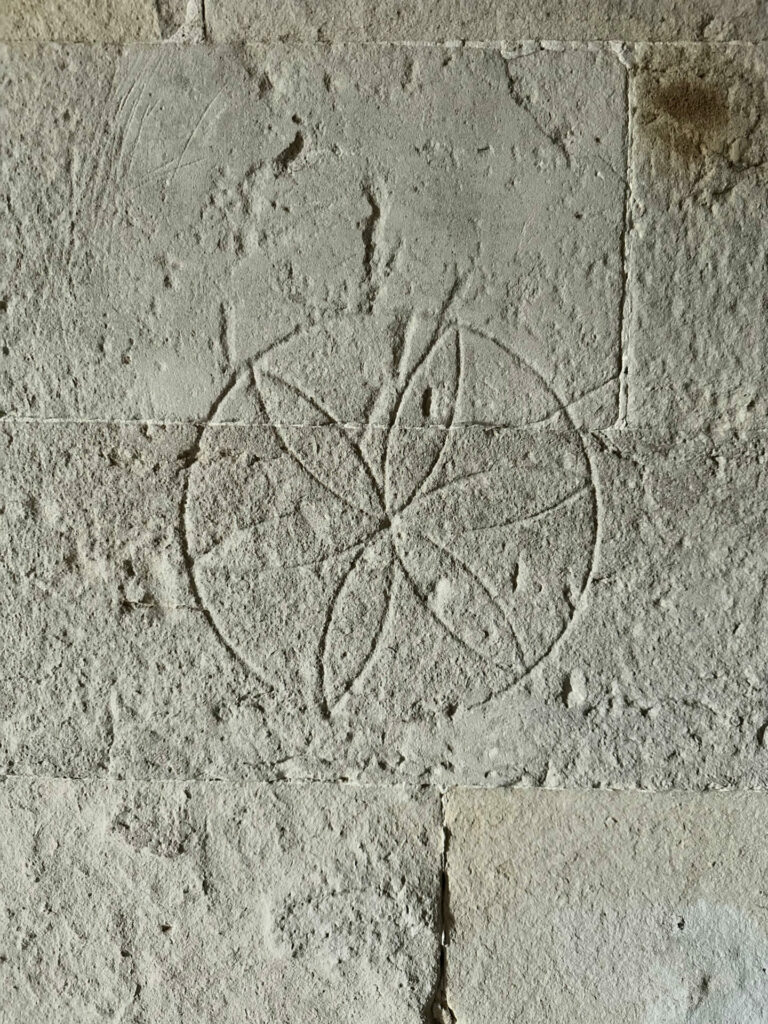
The manor is constructed in a ‘T’ shape. The stem of the ‘T’ comprises the screens passage and great hall, while the two-storey cross-wing consists of the service rooms (buttery and pantry) on the ground floor and the family’s private dwelling area (the solar) on the first floor. The great hall and solar contain the manor’s most celebrated feature: its oak roofs, which are said to be among Dorset’s finest examples.
Thomas and Anne White owned the house during part of the sixteenth century. They modified it, most clearly seen in the fireplaces and door frames, whose Tudor arch construction speaks to the date of their insertion. Carved initials ‘T’, ‘ A’, and ‘W’ clarify who was responsible for upgrading the medieval house. The gallery looking down onto the body of the great hall was also inserted in the sixteenth century.
Finally, one of the features that most caught my eye was a perfectly carved, symmetrical shape hewn into the stone adjacent to one of the downstairs doorways. This is a ‘daisy wheel’, also called a ‘hexafoil’. They were found in English buildings from the early medieval period up into the nineteenth century and were carved as a mark of ritual protection against evil. While I didn’t detect any evil spirits during my visit, something haunting about this now-deserted house lingers with you long after you have left.
Wimborne Minster
Address: High Street, Wimborne Minster, Dorset BH21 1EB
Our next destination moves us half an hour down the road and forward from the fourteenth to the fifteenth century. We are here to visit a tomb associated with the matriarch of the Tudor age, Margaret Beaufort, Countess of Richmond, and the mother of the founder of the Tudor dynasty, Henry VII. We are here to explore the tomb of Margaret’s parents, John Beaufort (1405-1444) and Margaret Beauchamp (1410-1483), 1st Duke and Duchess of Somerset.
Firstly, I should say a few things about another of Dorset’s attractive market towns, to which the minster gives its name. Like Sherborne, Wimborne Minster has its fair share of pretty, historic buildings, quaint cafes and independent shops. Sadly, my time in the town was limited. Still, the green in front of the Minster church was lovely, and I can imagine on a warm sunny day sitting outside one of the cafes encircling the green and enjoying one of my favourite pastimes: history + coffee + cake = bliss!
The Minster Church of St Cuthburga, as it is more formally known, was established as a Benedictine nunnery in 705 AD. It is one of England’s few – and second largest – chained libraries, dating to 1686. If it is open (sadly, it wasn’t when I visited), it is apparently well worth a visit.
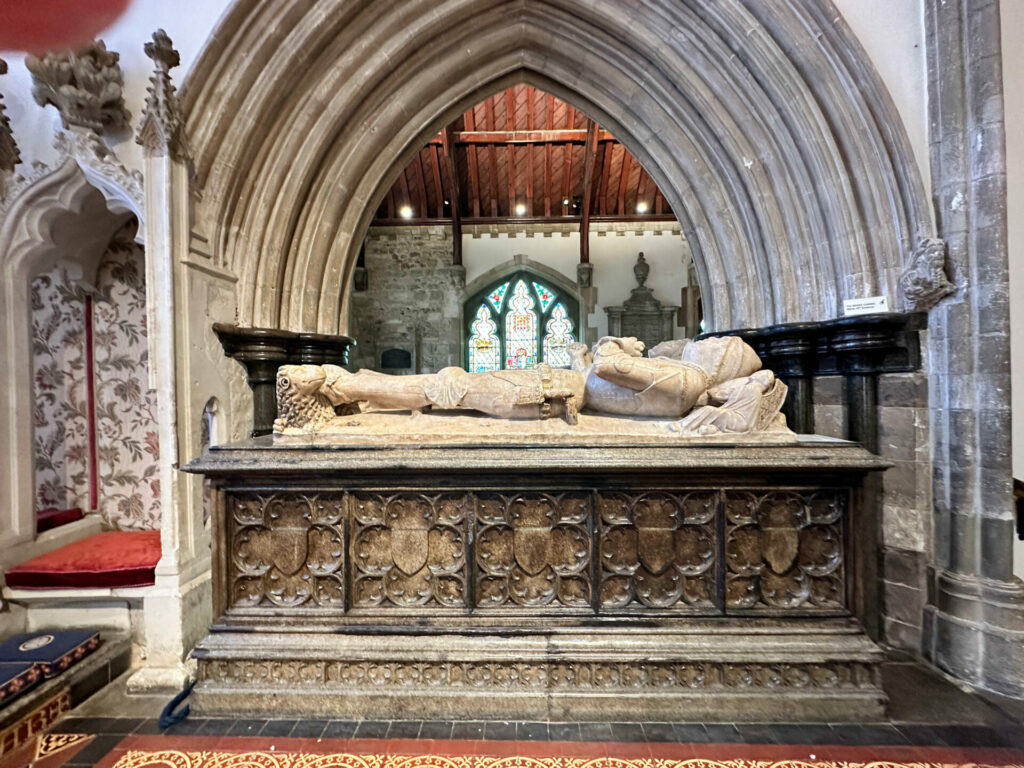
However, the tomb we are here to see occupies a spot to the right of the high altar. The alabaster effigies of the Duke and Duchess are beautifully carved and sit upon a tomb chest fashioned from local Purbeck marble. John is depicted wearing the knight’s armour of the 1440s (he died in 1444), while Margaret is dressed as a noblewoman of the 1480s (she died in 1483). The pair hold hands in eternal repose.
John Beaufort lived an eventful life which petered out to an ignominious end. He spent seventeen years as a prisoner of the One Hundred Years’ War in France. After his release, he seems to have reluctantly returned to the fray, his enthusiasm for war rekindled by a ‘bribe’ which saw his elevation to the dukedom of Somerset. However, John failed to cover himself in glory in his final campaign. Upon his return, he was ejected from the Court and soon after died at his castle in Corfe, amongst rumours that he had committed suicide.
Some six years previously, in 1438, Beaufort had married Margaret Beauchamp. Their only child was christened Margaret, born in May 1443. After Henry Tudor’s accession, Margaret visited Wimborne Minster alongside her son to arrange a chantry and for prayers to be sung for ‘My Lady’s Ancestors for ever’.
While there, be sure to take note of the simple Purbeck marble tomb chest situated to the left of the high altar. This is the burial site of Gertrude Courteney, Marchioness of Exeter, who married Henry Courteney in 1519. The latter was a close friend (and first cousin) of Henry VIII’s, having ‘been brought up of a child with his grace in his chamber’.
Gertrude was imprisoned in the Tower of London in 1538 alongside her husband and their son, Edward. This followed rumours of the so-called Exeter Conspiracy, which supposedly aimed to unseat Henry VIII by those opposing the religious changes being forced upon the country by the King. Henry Courteney was executed soon after his arrest. Gertrude and her son were attainted. The Marchioness remained imprisoned until 1540; eventually, she was released and died on 25 September 1558.
Tudor Dorset: Day Three
Corfe Castle
Address: The Square, Corfe Castle, Wareham, Dorset BH20 5EZ
Corfe Castle has a long and noble history, linked closely to the Crown and England’s most powerful men and women. It witnessed regicide, imprisonment and intrigue, finally becoming a luxurious Elizabethan home before its ruin in the English Civil War.
However, even in ruins, the castle sits imperiously atop a high mound of land that dominates the landscape, the small village of Corfe nestled at its foot. This is the Isle of Purbeck (it is not an island, by the way!) from where the famed Purbeck marble, so sought after in medieval construction, originates.
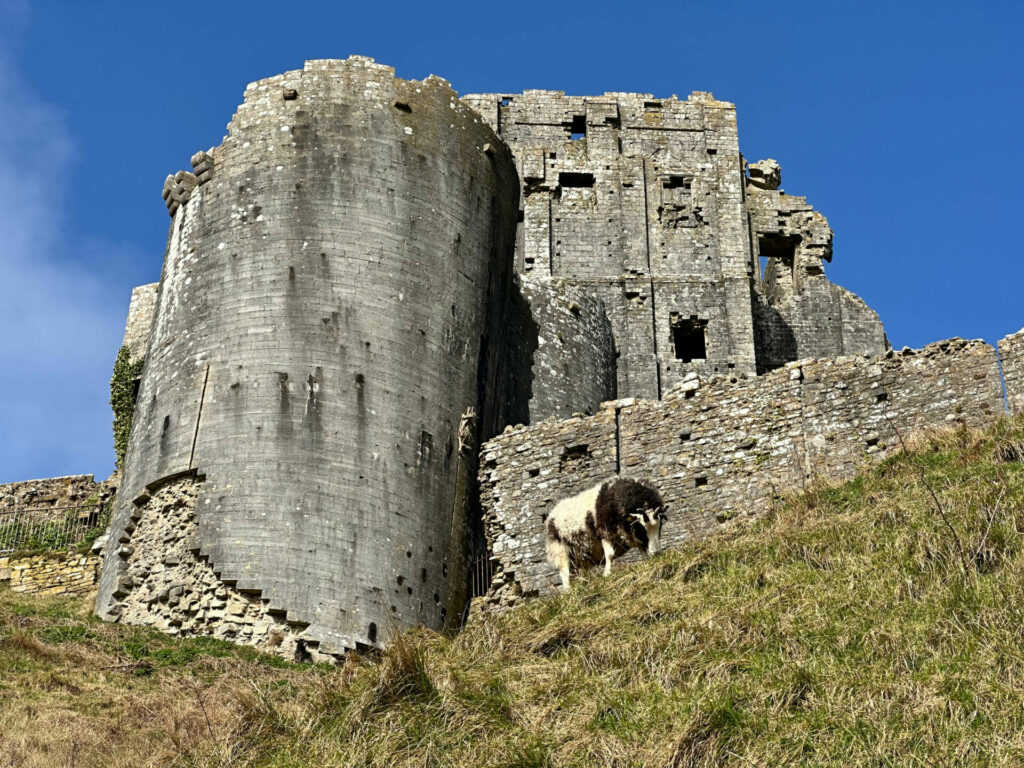
It was at Corfe that Queen Elfrida plotted the murder of her stepson, Edward the Martyr (c. 962–978), clearing the way for her son, Ethelred, to become King.
After the Norman Conquest, the Crown held the castle, and work on the stone-built structure we see today began. King John used Corfe Castle as his State prison. When Henry IV came to the throne, he gave the castle to ‘our’ John Beaufort, then 3rd Earl of Somerset (mentioned above). However, the Beaufort’s lost Corfe when it was returned to the Crown after the execution of its then owner, Edmund, 4th Duke of Somerset, following the bloody Lancastrian defeat at Tewkesbury in 1471. When Henry VII became king, he granted Corfe to his mother, Margaret Beaufort, Countess of Richmond, thus returning the castle to Beaufort ownership.
During the sixteenth century, Corfe passed through a line of illustrious owners, including Henry Fitzroy, Duke of Richmond and Somerset; Edward, Duke of Somerset; and Sir Christopher Hatton, Elizabeth I’s Lord Chancellor. Hatton spent a small fortune restoring and improving the castle, making it a prestigious home and lavishing it with fine furnishings, tapestries and silks.
Sadly, within fifty years, the castle was torn apart during the English Civil War. Today, however, there are substantial remains. You can enjoy them as you pick your way uphill through two gatehouses and an outer courtyard to reach the castle’s inner sanctum, which once contained the most luxurious apartments.
On sunny days, when the blue sky stretches as far as the eye can see, glorious views over the Dorset countryside and towards the south coast can be enjoyed. On the other hand, if you catch the castle when the mist has descended, as I have in the past, it is particularly other-worldly, with great hunks of fallen stone and ragged sightless windows imbuing the site with a haunting desolation of a once-distinguished past.
Athelhampton House and Gardens
Address: Puddletown, Dorchester, Dorset DT2 7LG
In my opinion, Athelhampton is one of the most picturesque Tudor houses in Dorset. The current house was built in 1485, at the dawn of the Tudor age, for Sir William Martyn, a landowner and collector of wine duty in the local area.
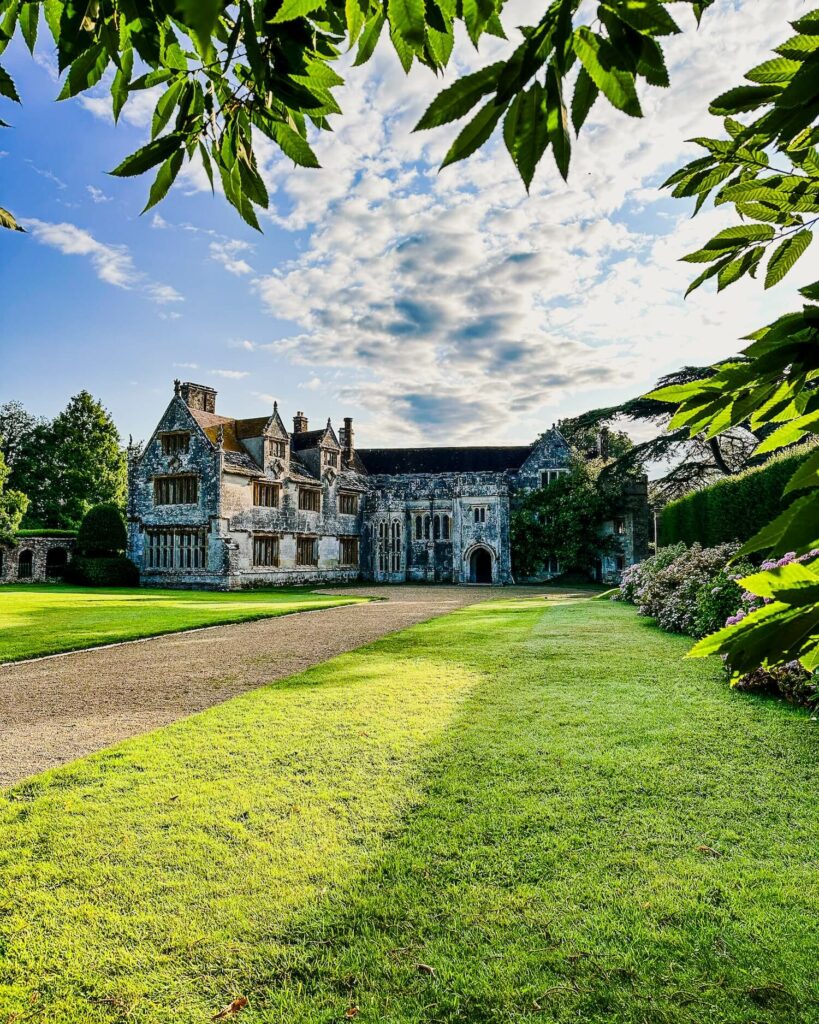
One of the manor’s most spectacular features is its cosy yet impressive great hall, linenfold panelling, oriel window, stained glass, and minstrel’s gallery. Most recently, the four-hundred-and-fifty-year-old Elizabethan kitchen was revealed after a three-year restoration project to remove later modernisations. What we have now is a miniature Hampton Court Palace kitchen, complete with the original Tudor fireplace and serving hatch.
Upstairs is a lovely Tudor bedroom known as ‘the marriage chamber’. Its interiors date to the sixteenth century, although the adjoining small chapel is thought to have been converted from an original spiral staircase. I have had the pleasure of sleeping in this room overnight, unaware I might have been sharing the space with one of Athelhampton’s friendly resident ghosts, the so-called ‘Grey Lady’!
Ghosts aside, Althelhampton is a wonderful place to visit. Alongside the house, you can explore the well-tended gardens and enjoy some excellent refreshments in the on-site cafe.
Tudor Dorset: Day Four
Cerne Abbey
Address: Abbey Street, Cerne Abbas, Dorchester DT2 7JQ
Cerne Abbas is best known for the ancient figure of a giant man sculpted into the chalk hillside just outside the village. However, as a lover of Tudor history, you will likely be more interested in what remains of its abbey, situated in the centre of the village.
Cerne Abbey was a Benedictine monastery founded in 987. Its history is astonishingly unremarkable—until the last sixty years or so of its existence when two interesting stories become associated with this apparently sleepy place. The first of these centres around the firestorm of 1471, when the two dominant Houses of York and Lancaster were locked in a bloody battle for supremacy.

Having spent some time in exile in France, Margaret of Anjou, the wife of the deposed Lancastrian King, Henry VI, arrived back on English shores determined to re-take the Crown and free her husband. Accompanied by her son and heir, Edward of Lancaster, she landed at Weymouth, Dorset, and made her way inland.
Her first overnight stay was at Cerne Abbey, where she learnt of the crushing Lancastrian defeat and the death of her ally, Richard Neville, Earl of Warwick, at the Battle of Barnet. It was at Cerne that Margaret must have considered her next move. Three weeks later, her son was dead, she was captured, and Edward IV had consolidated his grip on power following the resounding Yorkist victory at Tewkesbury on 4 May 1471.
Not a peep was heard from Cerne again until the 1530s when Henry VIII’s break from Rome gained momentum.
In 1535, a letter landed in Thomas Cromwell’s overflowing in-tray. One of the brethren of the abbey laid a series of damning accusations against the then-abbot, Thomas Corton. These included allowing the abbey and lands to become ruinous, allowing ‘concubines sit at the table with him’ and keeping a mistress who seems to have borne him children. The accusations were taken seriously enough to warrant inspection by commissioners, and the abbey was closed in 1539.
Today, the remains of the abbey are in private hands. However, at certain times, and for a modest donation, you can wander around what was once part of the abbey precinct and see the abbot’s guest house and an ornate gatehouse, part of the abbot’s lodgings, that once led toward the now-vanished abbey church.
Mapperton House and Gardens
Address: Mapperton, Beaminster, Dorset DT8 3NR
Thirteen miles west of Cerne is another glorious heritage property: Mapperton House. The exterior’s allure is conjured up by Mapperton’s mellow honey-coloured stone, twisted finials, and heraldic beasts. Although the house we see today largely dates from the seventeenth century, one wing survives from the earlier Tudor house.
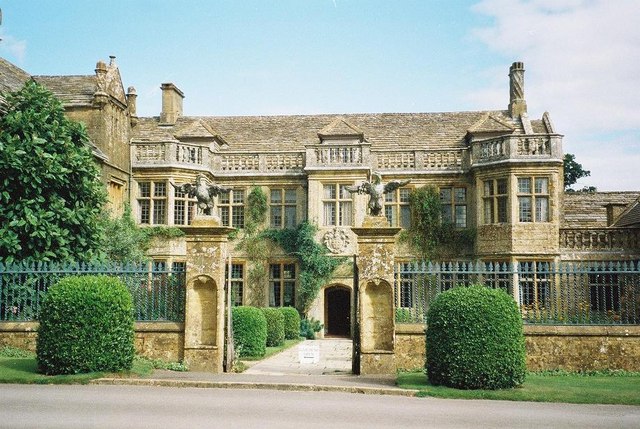
Around 1545, Robert Morgan (the then-owner) married a local girl, Mary Wogan. It seems that this enticed Morgan to rebuild an earlier medieval house. The north wing is all that remains of Morgan’s Tudor house. However, this range includes two particularly fine Tudor interiors. The first is a pendant ceiling, which adorns what is believed to have been the Tudor Great Chamber. The second is a mid-century overmantel in the north-west bedroom, which includes profile heads and candelabra-like forms.
The rest of the property was remodelled in the 1660s, although the central hall range probably includes some of Robert Morgan’s original hall. I have read that behind the overmantel of the fireplace, which dates from the early twentieth century, is an original inscription. This inscription reads, Robert Morgan and Mary his wife built this house, In their own lifetime, at their own charge and cost. What they spent, that they lent, What they gave, that they have, What they left, that they lost.
Mapperton is furnished as a much-loved family home belonging to Viscount and Viscountess Hinchingbrooke. While the house and gardens are quintessentially English and utterly charming, we might remember that during the Tudor period, not everything was so wonderfully rosy in the Mapperton household. In 1580, Robert’s son and heir, John Morgan, ended up swinging from a hangman’s noose as punishment for stabbing his brother-in-law to death over dinner. While this tragic event unfolded elsewhere, it is not hard to imagine the echoes of the family’s anguish that must have once reverberated around Mapperton’s closeted halls.

